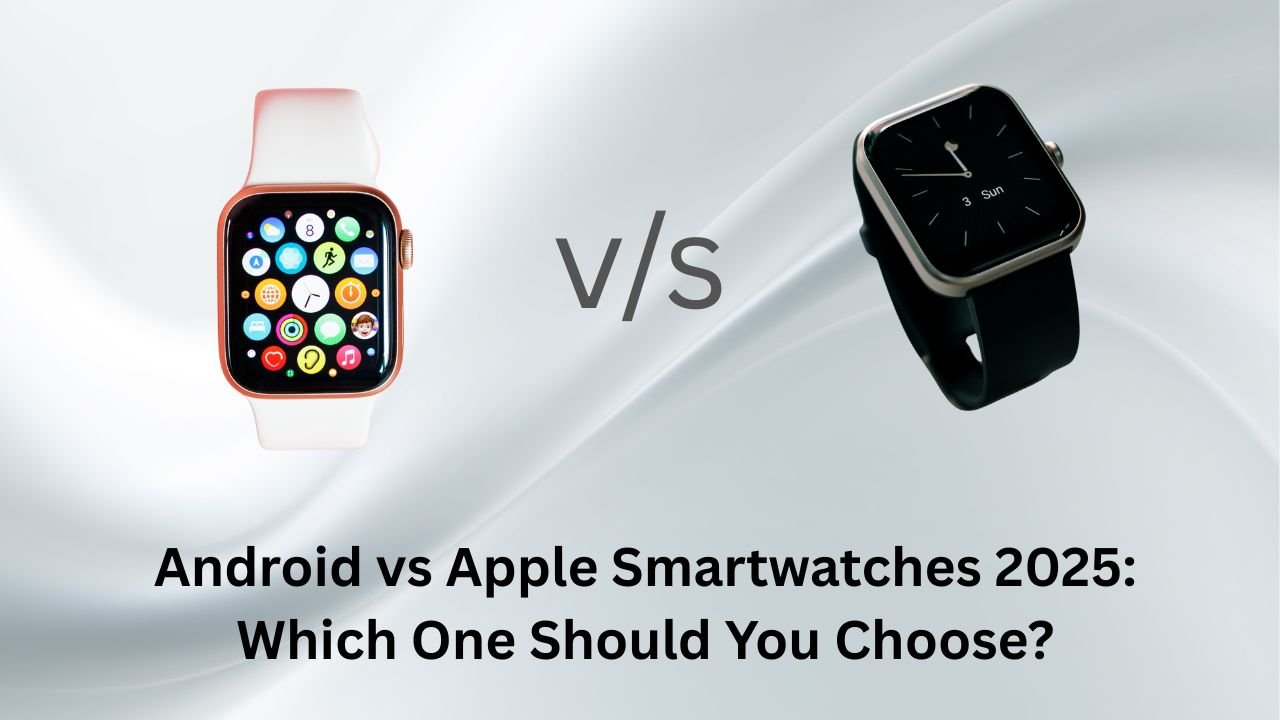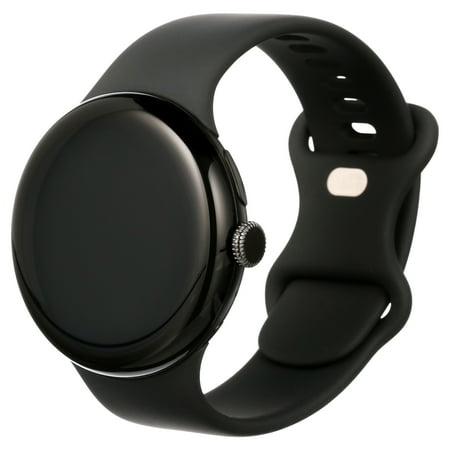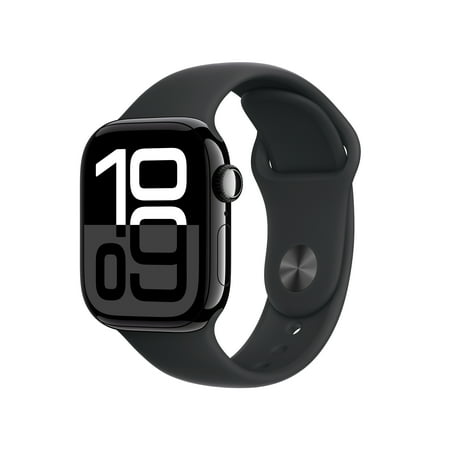Introduction:
The battle of Android vs Apple Smartwatches is not about which brand is “better.” It’s about which ecosystem matches your smartphone, lifestyle, and priorities. In 2025, the choice has become sharper with Apple Watch Series 10, Ultra 3, and SE standing against the best from Android’s side, including Google Pixel Watch 3 and Samsung Galaxy Watch 7/Ultra.
For a USA audience, where both iPhone and Android dominate, this decision comes down to compatibility and the experience you get when devices work together flawlessly. If smartwatch calling or messaging matters, you might also want to read our guide on smartwatches with calling and WhatsApp.
Start Here: Your Phone Dictates Your Choice
- Own an iPhone? Apple Watch is almost always the better choice, offering full compatibility and iOS-level smoothness.
- Own an Android phone? You’ll find more variety in design, price, and battery life among Wear OS watches and cross-platform brands like Garmin. For Samsung fans, check out our best Samsung smartwatches for men for tailored recommendations.
Feature-by-Feature Showdown for Android vs Apple Smartwatches 2025
Design & Customization
1. Apple Watch:
The Apple Watch sticks with its iconic square display. The base models offer lightweight aluminum cases, while the Ultra 2 brings titanium and a rugged edge for adventurers. The band ecosystem is massive, from official Apple designs to third-party fashion bands.
Apple Watch Ultra 2
Built for the bold, the Apple Watch Ultra 2 combines rugged titanium design with next-gen performance. Its 3000-nit display, advanced dual-frequency GPS, and dive-grade durability make it ideal for extreme sports, outdoor adventures, and triathlons.
Key Highlights:
- Titanium Build: Lightweight grade 5 titanium case with sleek black finish.
- Brightest Display Ever: 3000 nits brightness ensures perfect visibility in direct sunlight.
- Adventure Ready: WR100 water resistance (100m) and IP6X dust resistance.
- Battery Life: Up to 36 hours (normal use) and 72 hours in Low Power Mode.
- Precision GPS: Dual-frequency GPS with Apple Maps for unmatched route accuracy.
- Action Button: Fully customizable for workouts, segments, and interval training.
For Sports & Adventures:
- Runners: Pacer, Race Route, and heart rate zone tracking.
- Cyclists: Connects with Bluetooth sensors, measures cadence, power, and FTP.
- Swimmers: Detects strokes, calculates SWOLF, and supports pool/open-water modes.
- Hikers & Climbers: Backtrack GPS, offline maps, and waypoint features for navigation.
- Divers: Works as a full dive computer (Oceanic+ app with Buhlmann algorithm).
Health & Wellness:
- Electrical heart sensor, Vitals app for daily health insights, and seamless integration with Apple Fitness+.
Specs at a Glance:
- Case Size: 49mm titanium.
- Processor: S9 SiP with 64-bit dual-core chip.
- Display: Retina with 3000 nits brightness.
- Water Resistance: 100m (WR100).
- OS: watchOS 11 with advanced sports metrics.
Best For:
Extreme athletes, divers, and anyone who wants the most powerful Apple smartwatch ever built.
2. Android Smartwatches:
Samsung Galaxy Watch7
With its armor aluminum build, sapphire crystal glass, and MIL-STD-810H durability, the Galaxy Watch7 is designed for tough conditions while maintaining a sleek, modern look. It’s 5ATM + IP68 water and dust resistant, making it a true all-rounder for active users. For even better style, you can explore Galaxy Watch Active 2 bands to customize your setup.
Key Highlights:
- Galaxy AI Features: Personalized Energy Score shows your daily readiness and suggests improvements.
- Powerful 3nm Processor: Delivers faster multitasking, improved workout tracking, and optimized battery life.
- Upgraded Health Sensors: Advanced heart rate tracking, sleep analysis, and body composition measurements (BIA).
- Sleep Apnea Detection: AI-powered sleep tracking detects moderate to severe sleep apnea—first-ever in Galaxy Watches.
- Cycle Tracking: Monitors subtle temperature changes to predict your next period and ovulation.
Specs at a Glance:
- Screen Size: 1.5-inch AMOLED display.
- Battery Life: Up to 1 day on normal use.
- Band Material: Silicone.
- Connectivity: Wi-Fi and Bluetooth.
- Water Resistance: 5ATM + IP68.
- OS: Samsung Wear OS.
Best For:
Tech enthusiasts who want AI-driven health insights, precision tracking, and a premium build that’s built to last.
Value Proposition: Apple wins for a consistent premium look, but Android’s variety ensures there’s a style for everyone.
Seamless Integration & Ecosystem Benefits
Apple Watch:
The Apple Watch acts like an extension of the iPhone. It syncs perfectly with AirPods, MacBooks, Apple TV, and HomeKit devices. Features like Handoff, Find My, and Apple Pay make it feel like magic when you stay within Apple’s walled garden.
If your ecosystem revolves around cross-device messaging, you should understand WhatsApp multi-device support, as it’s becoming a crucial factor for smartwatch compatibility.
Apple Watch Series 8
The Apple Watch Series 8 is a refined mix of health, safety, and style. With advanced sensors, crash detection, and seamless iPhone integration, it’s the perfect smartwatch for everyday use and fitness.
Key Highlights:
- Always-On Retina Display: Bright and easy to read, even with your wrist down.
- Health Insights: ECG, blood oxygen tracking, and detailed sleep stage monitoring.
- Safety Features: Crash Detection, Fall Detection, and Emergency SOS.
- Temperature Sensing: Provides deep insights, especially for women’s health.
- Durability: Crack-resistant, dustproof (IP6X), and swimproof (WR50).
Fitness & Activity:
- Enhanced Workout app with detailed performance metrics.
- Activity rings and fitness challenges to keep you motivated.
- 3 months of Apple Fitness+ free for new users.
Seamless Integration:
- Unlocks your Mac, uses Apple Pay, and easily syncs with Apple devices.
- Find your devices or send money with just a tap.
Specs at a Glance:
- Operating System: WatchOS.
- Memory: 32 GB storage.
- Battery: 308 mAh lithium-ion battery.
- Connectivity: USB, Bluetooth, Wi-Fi (2.4 GHz & 5 GHz).
- GPS: Built-in GPS for precise outdoor tracking.
- Shape & Size: 45mm square display.
Best For:
iPhone users looking for a stylish, health-focused smartwatch with excellent safety features.
Android Smartwatches:
OnePlus Watch 3
The OnePlus Watch 3 is built for those who want a balance of fitness tracking, smart connectivity, and durability. With 5ATM water resistance, MIL-STD-810H military-grade toughness, and a 120-hour battery life, it’s designed for everyday adventures.
Key Highlights:
- Durability: Meets MIL-STD-810H standards, surviving extreme temperatures (-40°C to 70°C), vibration, humidity, and even salt spray tests.
- Water & Dust Resistance: 5ATM rating (50m) and IP68 protection ensure resilience against water splashes and dust (not for diving or saunas).
- Health Check-In: A 60-second Health Check-In feature (rolling out March 2025 OTA) for quick wellness insights.
- Fitness Tracking: Tracks daily activity, heart rate, sleep, and workouts with reliable accuracy.
- Battery Life: Up to 120 hours of use—great for extended trips or minimal charging needs.
- Smart Features: Wear OS 5 + RTOS for smooth performance, plus Google Wallet (region-based), NFC, Bluetooth, and Wi-Fi connectivity.
At a Glance Specs:
- Screen Size: 1.5 inches.
- Band Material: Rubber strap, designed for comfort and durability.
- Wireless Options: Bluetooth, Wi-Fi, NFC, GPS.
- Water Resistance: 5ATM + IP68.
- OS: Wear OS 5 with RTOS for efficient battery management.
Best For:
Outdoor enthusiasts and fitness-conscious users who value a rugged smartwatch with long-lasting battery and smart Google ecosystem features.
Operating System & User Experience
Apple Watch (watchOS 10):
With watchOS 10, Apple refined Smart Stacks, added Workout Buddy AI, and upgraded navigation with the Digital Crown. The menus are fluid, and Apple Intelligence now delivers contextual smart replies and predictive suggestions.
Apple Watch Series 10
Apple Watch Series 10 brings a thinner, lighter design with 30% more screen area for crystal-clear visibility. With faster charging, advanced health tracking, and unbeatable Apple ecosystem integration, it’s built to keep you connected and motivated all day.
Key Highlights:
- Bigger & Brighter Display: A larger AMOLED screen with 30% more viewing area, perfect for workouts and quick glances.
- Advanced Health Insights: ECG app, heart rate notifications, sleep tracking, and retrospective ovulation estimates.
- Fitness Powerhouse: Activity Rings, customizable workout tracking, depth sensor, and water temperature tracking for swimmers.
- Safety Tools: Fall Detection, Crash Detection, Emergency SOS, and Check In notifications for loved ones.
- Faster Charging: Get 80% battery in just 30 minutes using Apple’s magnetic fast charger.
- Durability: Crack-resistant, IP6X dust-proof, and 50m water resistance.
- Carbon Neutral: Eco-friendly design with sustainable materials.
At a Glance Specs:
- Battery Life: 18 hours of typical use.
- Display: AMOLED with Always-On mode.
- Band Material: Silicone (customizable).
- Wireless: Bluetooth & Wi-Fi (GPS model).
- OS: watchOS 11.
Best For:
Apple users who want the latest health tracking and safety features in a lightweight, premium smartwatch.
Android Smartwatches (Wear OS 5):
Wear OS is finally polished, offering Google Assistant, Maps, Wallet, and Tiles for quick info. On the Pixel Watch 3, Gemini AI powers faster responses and proactive recommendations, while Samsung overlays its own Galaxy AI fitness features.
Samsung Galaxy Watch 6
Samsung Galaxy Watch 6 blends premium build with solid LTE features. Pair it with wireless headphones for gym, and you’ll have the perfect fitness and entertainment combo.
Key Highlights:
- Battery Life: Up to 40 hours on a single charge.
- Connectivity: Bluetooth, Wi-Fi, and 4G LTE for calls, texts, and streaming.
- Health Tracking: ECG, SpO2 (blood oxygen), and Body Impedance Analysis (BIA) sensors.
- Fitness Modes: Automatic workout tracking plus 90+ exercise profiles for tailored fitness metrics.
- Sleep Monitoring: Advanced sleep stage tracking for better recovery.
- Display: 1.36” Super AMOLED with excellent outdoor readability.
- Build Quality: Sweat-resistant, durable stainless steel construction with a stylish round design.
At a Glance Specs:
- Operating System: Wear OS.
- Memory: 1.5GB RAM.
- Battery Capacity: 361 mAh.
- Shape: Round with a 1.4-inch display.
- Special Features: Text messaging, GPS, and smart notifications.
Best For:
Android users seeking premium fitness tracking, reliable sleep monitoring, and 4G LTE connectivity without breaking the bank.
Value Proposition: Apple excels in polish and consistency, while Android shines with flexibility and Google service integration.
Health & Fitness Tracking
Apple Watch:
The Series 9 now include FDA-cleared ECG, blood oxygen tracking, temperature sensing, and even sleep apnea detection. The new Vitals app tracks trends for respiration and recovery.
Apple Watch Series 9
Apple Watch Series 9 is all about performance, convenience, and precision health tracking. With its powerful S9 chip, brighter display, and intuitive gesture controls, it’s the most seamless Apple Watch experience yet.
Key Features & Value Proposition:
- Display & Performance: Super-bright Retina display powered by the efficient S9 chip.
- Health Tracking: ECG, blood oxygen, irregular rhythm alerts, sleep stages, and temperature-based cycle tracking.
- Safety Features: Crash Detection, Fall Detection, and Emergency SOS keep you connected to help.
- Fitness Partner: Advanced metrics in the Workout app for runners, cyclists, and gym lovers.
- Carbon Neutral: Aluminum model with Sport Loop contributes to Apple’s eco-friendly goals.
- Storage & Apps: 64 GB onboard storage for apps, music, and podcasts.
Best For:
- iPhone users who want a health-focused smartwatch.
- Fitness enthusiasts looking for accurate metrics and coaching.
- People who value Apple’s seamless ecosystem and design.
Pros:
- S9 chip with faster, touchless interaction.
- Advanced health features like ECG and sleep tracking.
- Carbon-neutral build with sustainable materials.
Cons:
- No Android compatibility.
- 18-hour battery life (daily charging required).
- Premium pricing compared to some Wear OS alternatives.
Android Smartwatches:
Google Pixel Watch 3 Ultra offers body composition (BIA) and advanced sleep staging. For budget-friendly alternatives with strong fitness features, see our best midrange smartwatches under $300.
Google Pixel Watch 3
Pixel Watch 3 pushes AI integration further with smarter call screening, enhanced step tracking, and upgraded workout tools. The brighter, larger Actua display makes it easier than ever to check your stats in any lighting.
Key Features & Value Proposition:
- Display: 45mm Actua display, 10% larger and twice as bright as Pixel Watch 2.
- Battery: 24 hours with always-on display, or up to 36 hours in Battery Saver mode.
- AI Assistance: Screens unwanted calls and holds calls for you.
- Fitness & Health: Custom run builder, improved step counting for stroller or wheelchair use, and PR tracking.
- Menstrual Health: Fitbit integration for menstrual cycle tracking and predictions.
- Google Apps: Access Google Maps offline, pay via Google Wallet, and enjoy improved Assistant functionality.
- Charging: 20% faster charging with USB-C fast charging (30W adapter sold separately).
Best For:
- Android users who want tight Google ecosystem integration.
- Fitness lovers who need advanced run-building features.
- Users who prioritize AI-assisted convenience like call screening.
Pros:
- Bright and responsive display.
- Smarter AI features for calls and workouts.
- Accurate step count even with limited arm movement.
Cons:
- Battery life still trails Garmin and Amazfit models.
- Fast charging adapter sold separately.
- AI features vary by region.
Value Proposition: Apple offers a holistic, medically accurate suite, while Android provides cutting-edge metrics with more variety across brands.
The Cross‑Platform Contenders
Not everyone wants to pick sides. Garmin Venu 3 and Amazfit Balance are strong cross-platform options. They offer:
- Multi-day battery life.
- Solid health tracking (VO₂ max, recovery metrics).
- Compatibility with both Android and iPhone.
Trade-off: Less deep integration with native phone features and fewer premium apps.
Common Questions & Misconceptions
Can Apple Watch Work with Android Phones?
No. It requires an iPhone for setup and key functions. Limited hacks exist but aren’t worth it.
Is Wear OS Battery Life Still Bad?
Not anymore. Pixel Watch 3 and Galaxy Watch 7 last 24–36 hours, while Garmin can stretch up to 20 days.
Are Android Watches as Secure as Apple?
Yes, but Apple’s uniform privacy policies are stronger. Android security varies slightly by manufacturer.
Future Trends: AI & Sensors
- Apple Intelligence: AI-backed Workout Buddy and smarter Smart Stacks.
- Google Gemini AI: Enhanced voice tasks, call screening, and personalized health coaching.
- Health Sensors: Expect non-invasive glucose tracking and more FDA-cleared health features in upcoming models.
- Longevity: Apple promises 5+ years of updates, while Google’s Pixel Watch leads Android’s long-term software support.
Conclusion: Which Fits You?
- Choose Apple Watch if: You own an iPhone, value polished apps, and want FDA-backed health features.
- Choose Android Smartwatches if: You prefer variety, longer battery life, or budget-friendly options.
Smartwatches evolve quickly. Think not only about your phone today but also which ecosystem’s future AI and health innovations will match your lifestyle.



![Android vs Apple Smartwatches 2025: Which One Should You Choose? 3 Apple Watch Series 8 [GPS, 45mm] - Starlight Aluminum Case with Starlight Sport Band, M/L (Renewed)](https://m.media-amazon.com/images/I/415iKTnl+rL._SL160_.jpg)

![Android vs Apple Smartwatches 2025: Which One Should You Choose? 5 Apple Watch Series 9 [GPS 41mm] Midnight Aluminum Case with Midnight Sport Band S/M (Renewed)](https://m.media-amazon.com/images/I/41wpn8Wh51L._SL160_.jpg)




